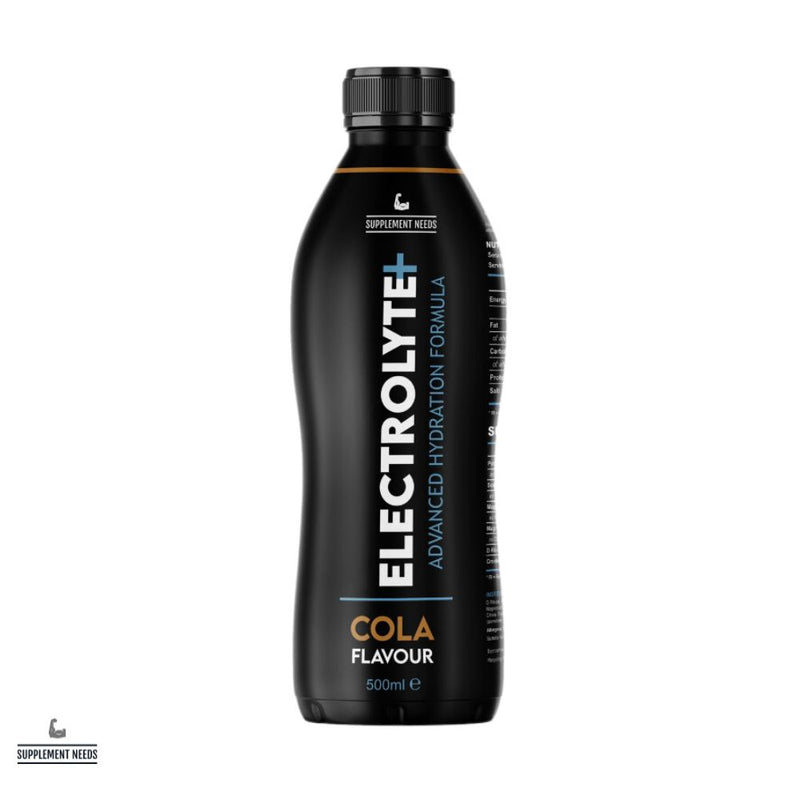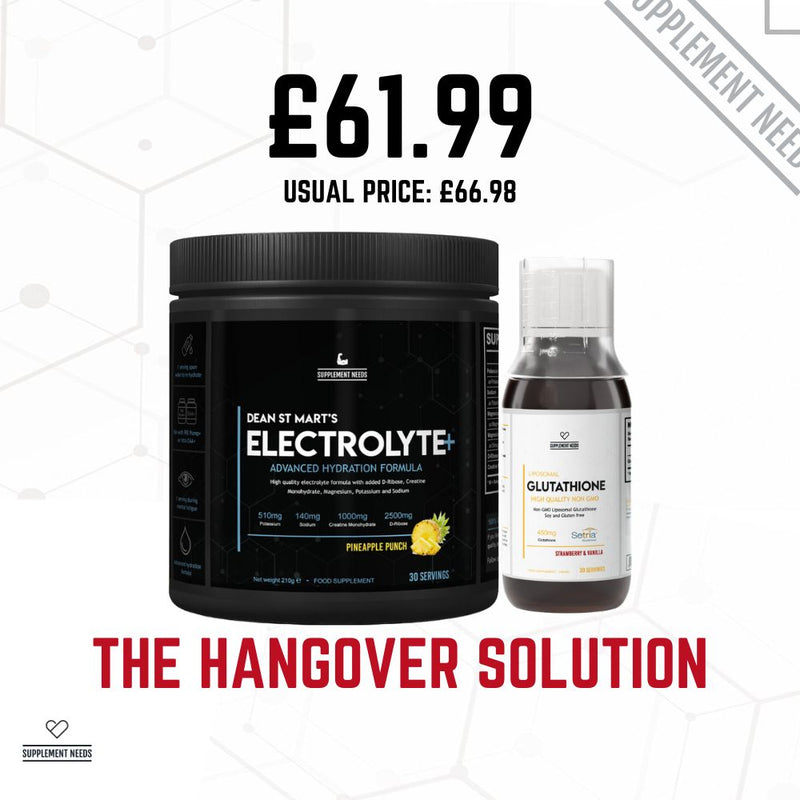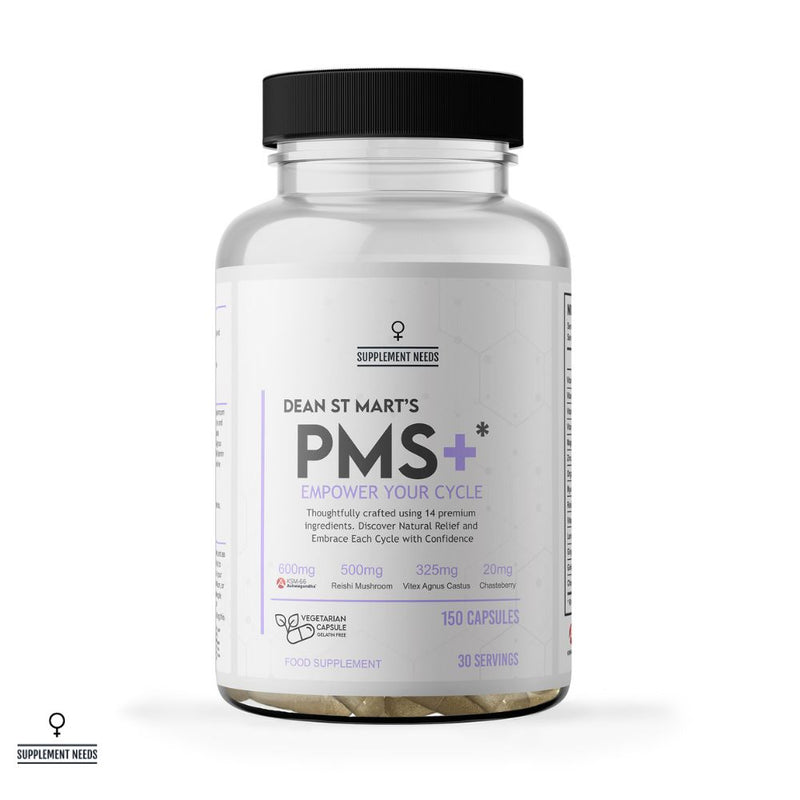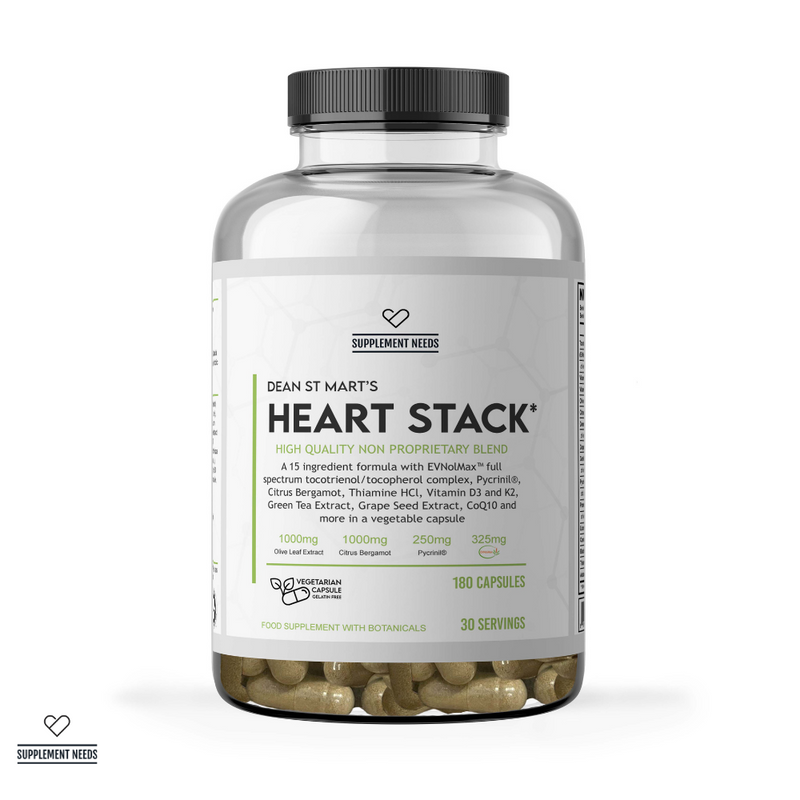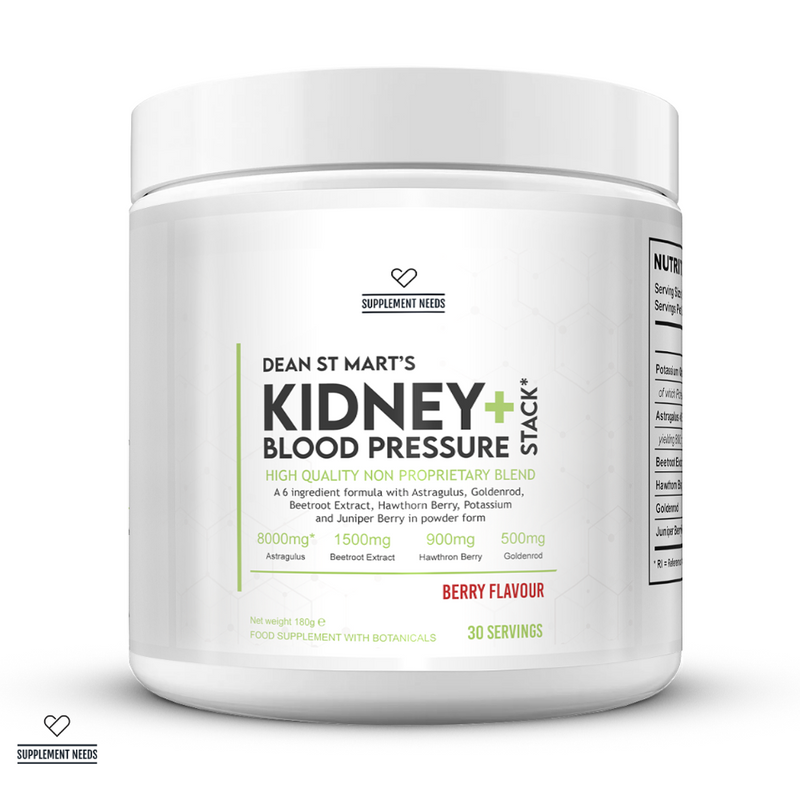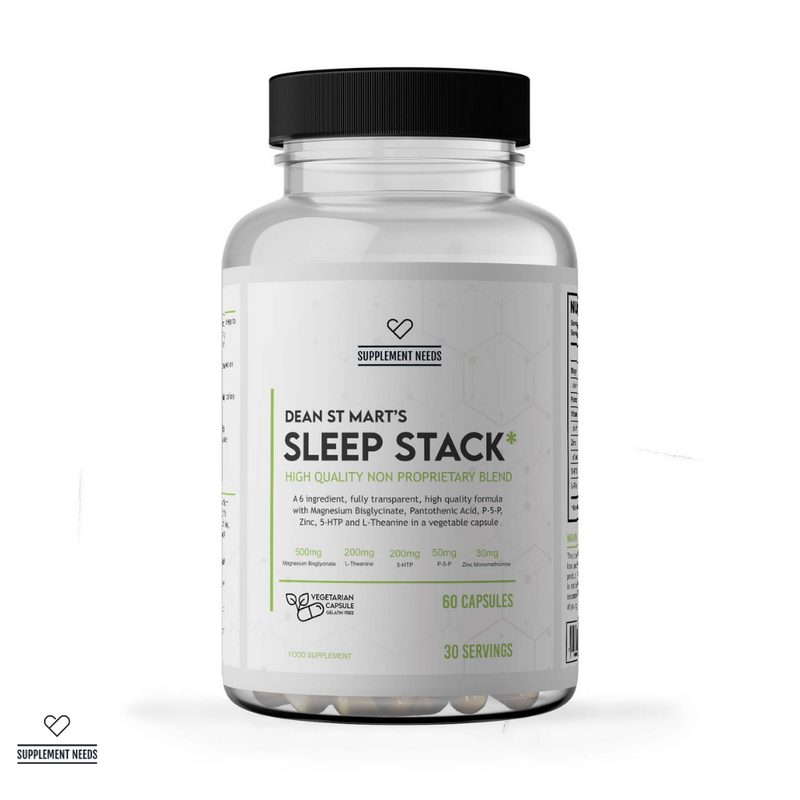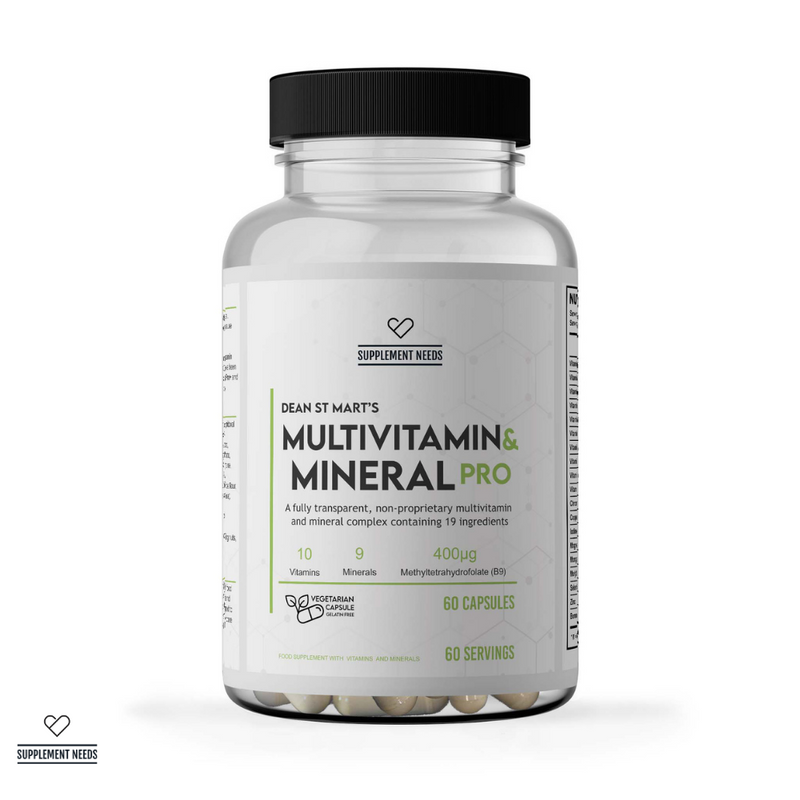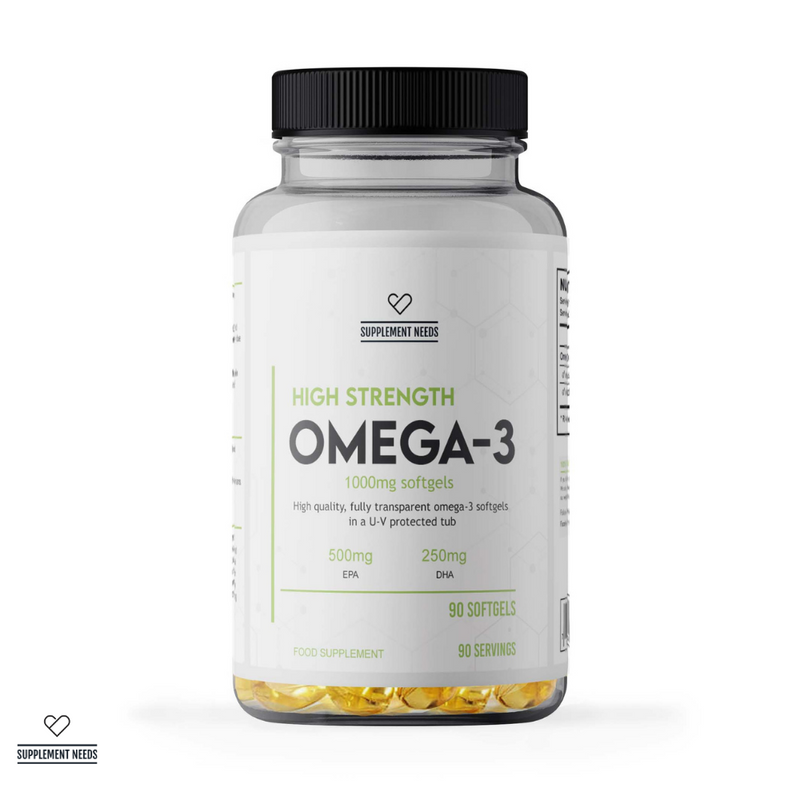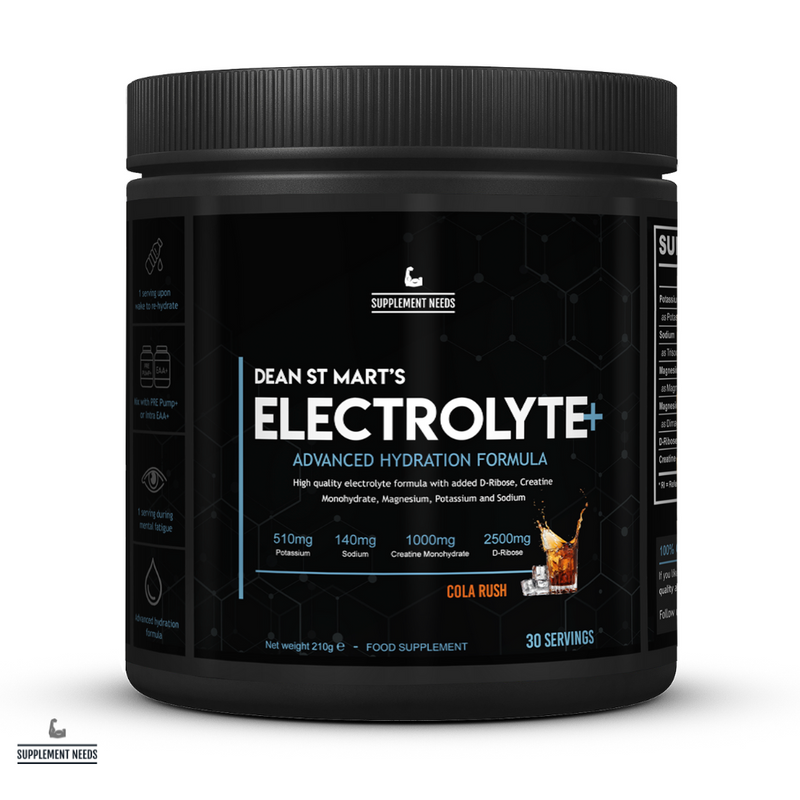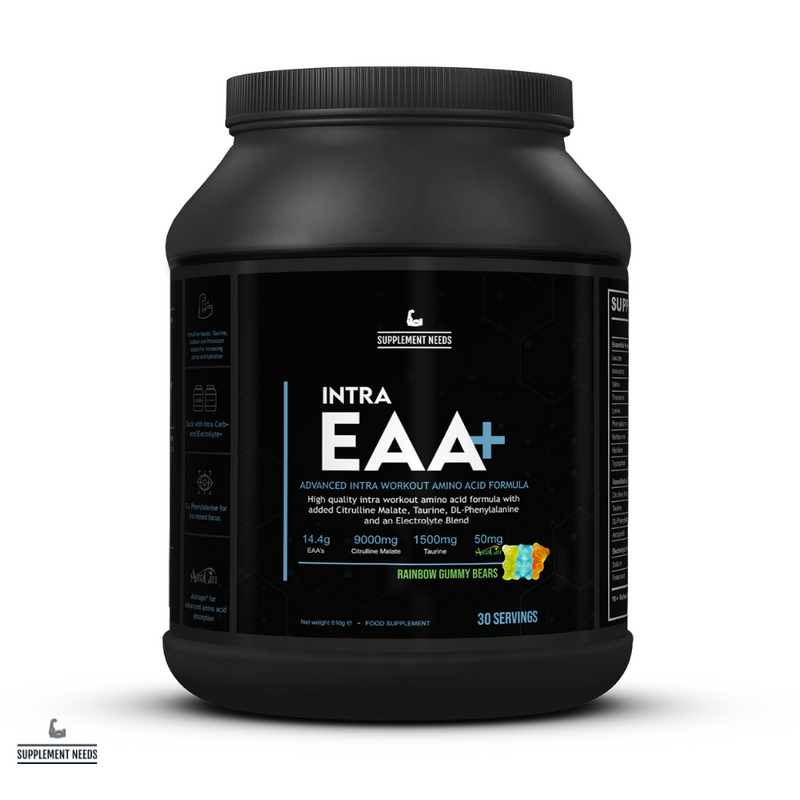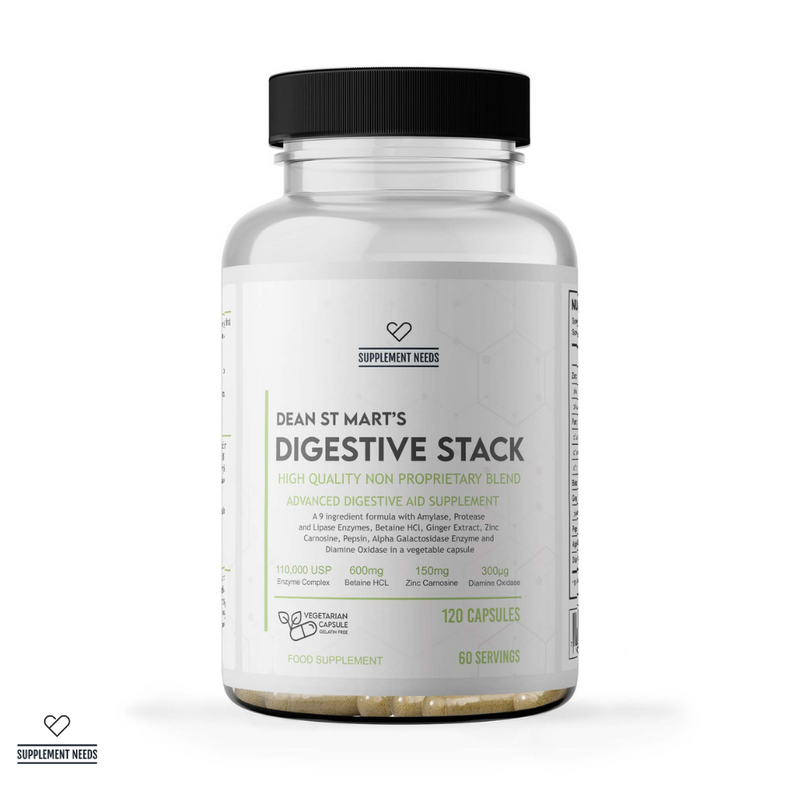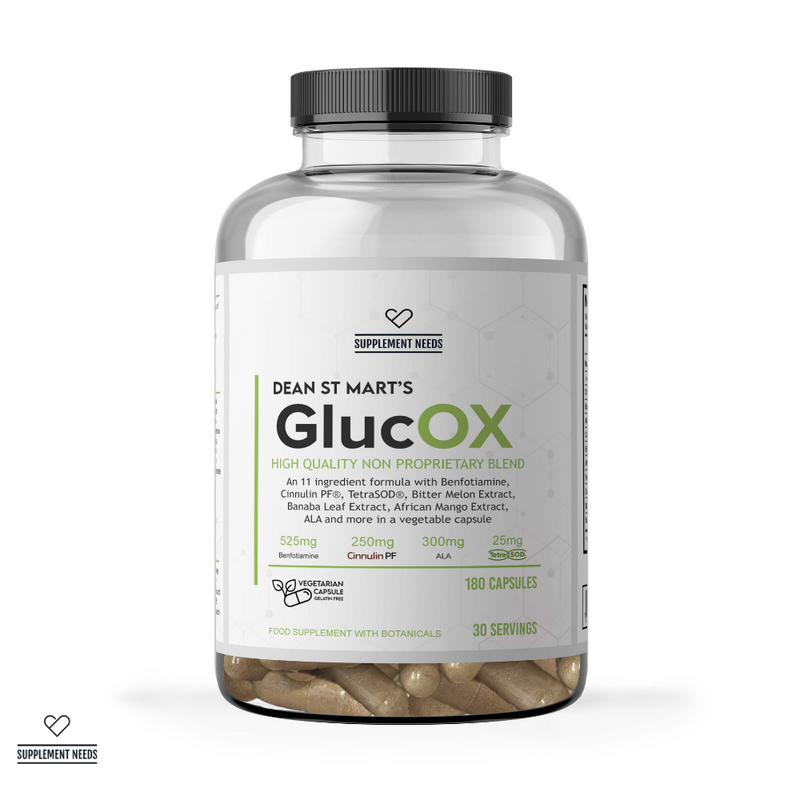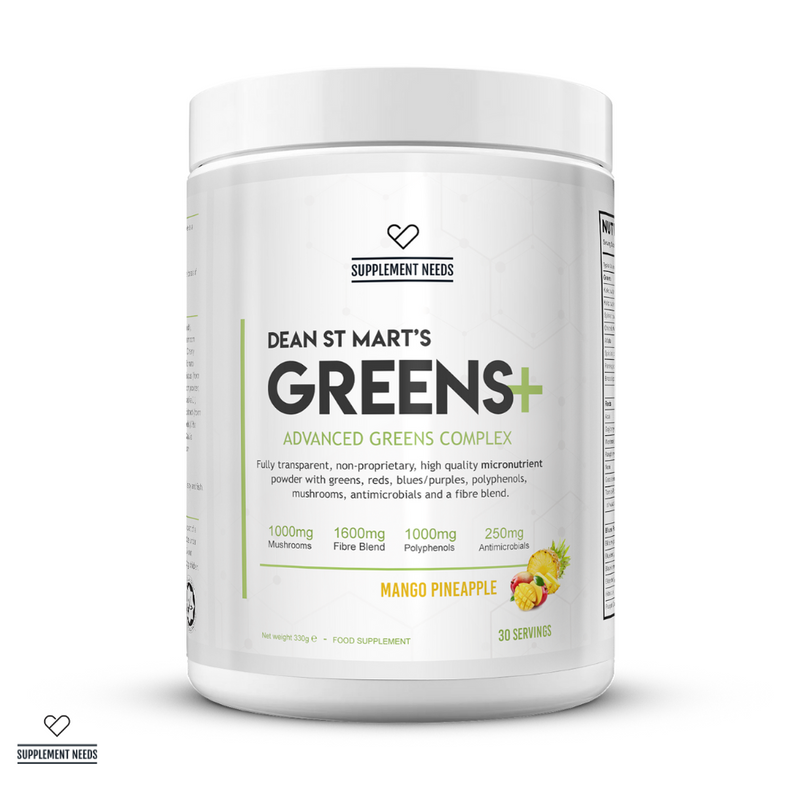If you’re serious about your fitness and health, and enjoy regular workouts it's likely you’ve heard about massage guns. They’re surrounded by many claims and purported benefits. But, what’s the truth? What exactly do massage guns do? And should you use one yourself? Find out in this guide from the Supplement Needs team…
What is a massage gun?
As their name suggests, massage guns are handheld, portable devices that are redolent of ‘guns’ or ‘drills’ that provide rapid bursts of pressure into muscle tissue.
This action is typically referred to under the moniker of percussive massage treatment or vibration therapy and is a reference to the fact that massage guns work on the basis of high-frequency percussion and low-amplitude movement to massage muscle tissue.
Today’s massage guns tend to be wireless and powered by a rechargeable lithium-ion battery, thus providing convenience and ease of use. Depending on the exact model you buy, massage guns can run for as long as eight hours between charges.
Massage guns are also usually available with a variety of different attachment heads. These are interchangeable heads of differing sizes and dimensions that allow the user to accurately massage specific parts of their body.
Massage guns find a variety of uses - from warming up muscles prior to exercise, to help ease muscle tension whilst an individual is idle/prone, or as a post-workout therapy in order to promote recovery.
Perhaps most importantly, massage guns work on the basis of tapotement1. This is a type of massaging technique that employs rapid, rhythmic tapping to stimulate muscles, promote blood flow and encourage the release of lymphatic build up in muscle. This massage technique has its roots in Swedish massage and can trace its roots back to the 19th century, when Pehr Henrik Ling - a physician - formalised the Swedish massage system.
Today, it’s possible to undertake tapotement and percussive therapy yourself using a massage gun.
TL;DR - massage guns are handheld devices that allow users to ‘massage’ their muscles via percussive therapy.
How do massage guns work?
Okay, so we’ve defined what massage guns are, but how exactly do they work? What is the underlying mechanism that allows massage guns to provide percussive therapy? Let’s have a look.
Electric motor
At the heart of massage guns sits an electric motor. When in operation, this motor creates a rotational movement which is in turn used to drive the percussive mechanism. This latter mechanism converts the rotational force generated by the motor into a back-and-forth movement which drives the ‘head’ (the part of the gun that actually comes into contact with the body).
Note: the above is only a generalised description of the underlying mechanisms of massage guns. These can vary from gun to gun. For example, some massage guns use what’s known as an ‘eccentric rotating mass’ (ERM). This is a weighted component attached to the motor’s drive shaft that creates an ‘off balance’ rotation (and thus percussive movement). Other guns use a series of cams to convert the rotational movement of the drive shaft into a back-and-forth movement.
When it comes to selecting a massage gun, there are a number of important points you should consider regarding the motor. These include:
-
Speed: the speed of a massage gun is measured in revolutions per minute (RPM). Depending on the model you use, massage guns will typically have a variety of speed settings. For example, at the SN Hub, we use Pulsio massage guns which have five different speed settings, up to a speed of 6,500 RPM.
-
Stall force: if you’re not familiar with the concept of ‘stall force’ (and we don’t blame you if you aren’t!), then this refers to the degree of force at which the massage gun will stop operating. When it comes to a deep tissue massage, you ideally want to be able to apply as much force as possible. In other words, if you want a massage gun that can effectively massage deep tissue, you want one with a high stall force. For example, the Pulsio massage guns at SN Hub have a stall force of 40 kg.
-
Motor strength: this refers to the underlying power of the electric motor. It is typically measured in watts. The higher wattage the motor, the higher the speed (RPMs) it’s going to be able to deliver.
Massage head
This is arguably the most important part of a massage gun - the massage head. It’s the head that is used to directly apply the percussive force of the gun to the targeted part of the body.
The average massage gun will come with a series of different heads. Each head is designed to target specific muscle groups and effectively massage different parts of the body.
These different heads can include:

Silicone ball
This is the ‘all-rounder’ massage head, able to provide an all-body massage. The ball shape not only allows you to gently massage your muscles, but also provide pin-point relief where necessary. Furthermore, silicone ball heads are designed to be ‘grippy’, allowing you to securely apply pressure to your muscles.
Silicone fork
As you’ll see from the image above, the silicone fork head provides two ‘prongs’. This attachment is designed to allow you to effectively massage those parts of your body where muscle fibres run in parallel to each other (e.g. Achilles tendon and upper trapezius muscle being the most prominent examples).
Silicone trigger
Shaped akin to a bullet, the silicone trigger head is designed to provide very targeted pressure and is ideal for reaching deeply seated muscles and tight spots.
Metal flat
As the name suggests, the metal flat head is a broad, flat head that is designed for all-body massages. Being metal rather than silicone, the metal flat head is designed to glide smoothly over your skiing rather than being ‘grippy’ like silicone. The metal flat is arguably the best head to use if you want your massage to have a more relaxing effect rather than a recovery effect.
Massage gun ‘amplitude’
When it comes to looking at message guns and their ‘heads’ it’s important to consider something called ‘amplitude’. Also known as stroke length, this refers to the distance the massage head travels back and forth.
The typical massage gun will have an amplitude of between 15 and 18 mm. However, you will sometimes see smaller, more compact models that have an amplitude of between 7 and 12 mm.
At the SN Hub, our massage guns have an amplitude of approximately 14 mm.
Is amplitude all that important? Whilst the answer is yes, we’d argue that the most important considerations are the gun’s power (e.g. RPM) and stall force. It’s these two latter points that are arguably the most important as it is these characteristics that determine the ultimate quality of the massage.
Hopefully, you’ve now got a clear idea as to the underlying mechanisms of massage guns and how they operate. But, what exactly do they do from a physiological perspective? That’s what we’ll examine in the next section of this article.
What does a massage gun do? What are the potential benefits of massage guns?
What exactly then do massage guns do? Are they different from regular ‘manual’ massages? And, perhaps most importantly, does using a massage gun have any potential health benefits? Let’s have a look.

Percussive therapy and massage guns
The potential efficacy of massage guns (and associated potential benefits) centres on the fact that they provide ‘percussive therapy’. This, in turn (as we mentioned at the outside) is linked to the massage technique of tapotement.
As you’re about to read, percussive therapy has been extensively studied, with the extant literature suggesting myriad potential health benefits.
Potential increases in muscle strength
We’ll kick things off with one of the perhaps most surprising potential benefits of massage guns and percussive therapy.
Whilst massage guns are popularly viewed as a recovery device, studies have begun to suggest that the pre-workout use of massage guns may contribute to improved muscle strength.
One recent 2023 study2 - which conducted a literature review of 13 separate studies - concluded that the use of percussive therapy delivered by massage guns ‘can help improve acute muscle strength, explosive muscle strength and flexibility, and reduce experiences of musculoskeletal pain’.
Potential recovery improvements
Massage guns - and percussive therapy - are most closely linked with post-workout recovery. And, from a lay point of view this makes sense. If you’re feeling tired and sore after an intense workout, it’s only natural to massage your muscles and ease some of that soreness.
But, what does the science say? Can massage guns and percussive therapy help with muscle recovery?
It’s an area which has been the subject of considerable study.
Take the systematic review that took place in 20233. Examining a total of 10 studies, the review concluded that ‘massage guns could be applied in order to improve short-term ROM (range of movement), flexibility and recovery-related outcomes’.
A further study that was conducted in 2013 was fairly equivocal in percussion therapy’s ability to assist with post-workout muscle soreness, stating that ‘Direct VT (Vibration Therapy) is supported for reducing pain’4.
In short, percussive therapy delivered via massage guns does appear to have a therapeutic effect against delayed onset muscle soreness (DOMS). One source postulates that this therapeutic effect of percussive therapy is brought about because ‘vibration therapy increases skin temperature, blood flow and hormonal responses to reduce inflammation and pain associated with DOMS’5.
A consultant orthopaedic surgeon, Carlos Cobiella, characterises the recovery-related benefits of massage guns as follows:
“Post-exercise use [of massage guns] can help flush out metabolic waste, improve blood circulation and expedite the recovery process. Use the massage gun after your workout when your muscles are warm, focusing on the muscle groups that you’ve worked during your exercise or areas that feel particularly tight or sore”6.
Potential to induce relaxation and wellbeing
On a more subjective basis, percussive therapy - and by extension massage guns - can potentially induce feelings of relaxation and wellbeing in users.
Speaking to Runner’s World, Lorna Sams, a PhD researcher in Sport and Fitness with the Open University has claimed that massage gun users have reported feeling “buzzed” or “energised” after using them, so there’s a feel good factor around them, too”7.
Other researchers agree with Sams’ hypothesis, going so far as to suggest that the use of massage guns may have a positive impact on the parasympathetic nervous system.
If you’re not familiar with the parasympathetic nervous system, it is one of the two critically-important parts of the autonomic nervous system (the other being the sympathetic nervous system).
The parasympathetic nervous system is responsible for your body’s ‘rest and digest’ response (whereas the sympathetic nervous system is responsible for your ‘fight or flight’ response)8.
Using acetylcholine as its primary neurotransmitter, the parasympathetic nervous system helps maintain and regulate bodily functions such as:
-
Resting heart rate.
-
Sexual arousal.
-
Urination and defecation.
-
Digestion.
-
Breathing rate (via resting bronchial constriction).
-
Metabolism.
As you can see, it does a lot! In a basic sense, the parasympathetic nervous system can be described as the system that allows your body to function ‘smoothly’ during times of rest.
You can perhaps see why, if massage guns can induce the parasympathetic nervous system, then they can potentially help induce a feeling of relaxation and wellbeing following an intensive workout.
Speaking to Men’sHealth Nikos Skevis sums up the potential relationship between massage gun use and the parasympathetic nervous system well:
“I think one of the most underrated benefits of percussive therapy is the effect it has on your parasympathetic nervous system. This is the rest and digest branch that ultimately kicks us into relaxation or recovery mode.
Extended periods of use, such as a full body 20-30 minute routine, will not only make your whole body feel as light as a feather, but can also have a profound effect on your mental state and bring on a state of deep relaxation - perfect for a pre-bedtime routine. This works even better when you combine some breathwork or mindfulness techniques”9.
Ability to massage ‘hard to reach’ muscles
This may seem like a rather ‘throw away’ point in context of the points above, but users of massage guns have reported that the use of guns allows them to reach and massage muscles that the likes of foam rollers cannot.
This is particularly true in the case of massage guns (like those at the SN Hub) that feature a variety of different head attachments.
Convenience and self-administration
An oft overlooked benefit of massage guns is that they allow you to massage yourself. There’s no need to schedule appointments or be added to waiting lists. You can massage yourself as and when you feel like it (e.g. immediately following a workout).
Another overlooked point about massage guns is that they can be beneficial for individuals who want a massage, but experience conditions such as touch aversion (haphephobia)10, sensory sensitivity, or tactile defensiveness (in other words, they don’t want to be massaged/touched by another person).
At the SN Hub you are able to use the massage guns in our dedicated recovery suite to self-administer a massage.

How to use a massage gun
So, how do you use a massage gun? In theory, it seems like one of those things that should be obvious - however, the reality is - if you want to get the most out of a massage gun, there are a number of nuances to consider. You’ll find those things to consider below.
Using a massage gun: pre-workout
Although traditionally perceived as a device to be used post-workout, massage guns can in fact be effectively used to help you warm up your muscle groups prior to a workout.
To get the best out of a massage gun pre-workout, you should first engage in your typical warm-up activities (e.g. light cardiovascular exercises, and muscular stretches).
Once you’ve sufficiently warmed up, you can then use a massage gun to gently massage the largest muscle groups, using light to medium pressure.
Note: a massage gun should not be used as a substitute for a proper, traditional warm up prior to exercise.
Using a massage gun: post-workout
Using a massage gun post-workout is arguably the time when you’ll get the most benefits out of your self-directed massage activity.
In terms of post-workout use, massage guns are generally used in two scenarios; to relieve muscle pain, or to induce relaxation. Let’s have a closer look at each scenario.
Using a massage gun to relieve muscle pain
Should you find that you’ve got a particular muscle (or set of muscles) that are causing discomfort after a workout (or if you’re having a flare up of a recurring muscle niggle), then consider the following massage gun routine:
-
Give your body a general sweep with the massage gun and feel for those more sensitive areas.
-
Once you’ve identified those sensitive areas, spend 20-30 seconds on each until you feel the sensitivity begin to ebb away. Should you find that the sensitivity doesn’t subside, you may consider applying a little more pressure (but, as always, listen to your body!).
Note: whilst you do want to ‘dig in’ and really massage those sore muscles, avoid high levels of pain, or you risk injury.
Using a massage gun to induce relaxation
It may be the case that you don’t have any muscle pain post-workout. That doesn’t mean you won’t benefit from using a massage gun.
To use a massage gun to relax, consider the following routine:
-
Use the metal flat head or a softer attachment. Keep the massage gun running at a lower rpm.
-
Gently run the massage gun across your entire body, targeting different sections and muscle groups each time.
-
Ensure you apply only light pressure and don’t stay on one area for too long.
-
After about 20-30 minutes you should have completely massaged your body (and hopefully!) induced a state of intense relaxation.
Massage gun top tips
Like many things, using the right techniques with a massage gun can help yield the best results. Below, you’ll find Supplement Needs’ top tips for getting the most out of your session with a massage gun at the SN Hub.
Focus on the large muscle groups
Whilst you may want to focus on a particular area (especially if it’s hard to reach), if you just want to achieve a general pre- or post-workout massage then it's best to focus on your large muscle groups. This in effect maximises your ‘return-on-investment’, where you get the best outcome for minimal time invested.
Large muscle groups to focus on include:
-
Quadriceps.
-
Calves.
-
Back muscles.
-
Hamstrings.
-
Biceps.
-
Triceps.
As you’ll almost certainly be aware, it tends to be these muscle groups that bear the brunt of an intense workout. By focusing on these muscles you can ensure you have a quality, consistent massage.
Keep the massage gun moving
You want to avoid keeping your massage gun stationary for too long. Doing so can cause irritation or even pain.
Keeping the massage gun in motion will better mimic the experience of a manual massage and will promote circulation - exactly what you want following a workout.
Begin with a low RPM
You don’t want to begin a massage with your gun set at the highest possible RPM. That’s a recipe for causing discomfort and irritation to your muscles.
Just as you would warm up prior to exercise, you effectively want to ‘warm up’ into your massage, beginning with the gun at its lowest settings before progressively increasing the RPM to a tolerable level.
In terms of what level you can reach, it’s important to listen to your body’s feedback. If at any point you feel like the RPM is too high, turn it down and apply less pressure.

How not to use a massage gun
Just as it's important to use the correct techniques with a massage gun, it’s equally important to avoid those techniques that may cause you harm or discomfort. Below, we’ve listed some of the main things you shouldn’t do when using a massage gun.
Don’t use a massage gun on sensitive body parts
A surprisingly common mistake when using massage guns is to apply them to literally every part of your body.
It’s important that you only use massage guns on your muscles. It’s especially important that you avoid areas of the body that are home to major arteries and veins. For example, the neck is home to the carotid arteries, vertebral arteries as well as the jugular vein (amongst others). This isn’t mere conjecture, either. There is a case in which the application of a neck massager to the front of the neck resulted in carotid thrombosis11.
So, in addition to the neck, other parts of the body to which a massage gun should not be applied include:
-
The head or face.
-
Anywhere along the spine.
-
Directly over your heart, kidneys, liver or other vital organs.
-
Bony areas such as your knees, hands, and other joints.
Don’t use a massage gun on injured parts of the body
We appreciate this sounds like common sense, but don’t use a massage gun on an injured body part. All too often, people blur the line between a sore muscle and one that is injured.
Using a massage gun on an injured muscle e.g. contusions, tears, and strains can exacerbate those injuries.
Likewise, you should avoid using a massage gun on any part of your body that has broken skin or skin conditions e.g. cuts, or rashes like eczema.
Don’t ignore your body
Your body is used to providing feedback in response to stimuli (such as a massage gun!). So, it’s important that you listen to your body when using a massage gun on it.
Consider the fact that if you’ve only just finished a workout, you may have injured yourself in a minor way without realising.
In short, if you suddenly start feeling pain or discomfort (beyond what you would normally expect) stop using the massage gun.
Don’t use a massage gun for too long
As the old saying goes, “too much of anything can be a bad thing!”.
And, this saying applies to massage guns. When you’re using a massage gun (especially at higher RPMs), you should avoid staying in one spot for more than two minutes.
Choose the right head
As you’ll have read earlier, most massage guns come with a selection of different heads - with each head designed for different applications.
Get the best out of your massage gun by selecting the head that’s best suited to the area that you’re working on. For example, if you want to massage the area around your achilles tendon, then choose a fork shaped head.
Experience premium massage guns at SN Hub
Want to enjoy the ultimate gym experience? Then sign up to the SN Hub, today. Aside from being home to one of the UK’s best elite gyms, the SN Hub is also host to an impeccably appointed recovery suite that provides you with access to infrared saunas, cryotherapy, compression boots and, of course, massage guns.
Explore membership options at the SN Hub today
For more insights and information about recovery therapies and supplements, read the Supplement Needs blog…
What Are the Benefits of Cryotherapy? | What Is a FibroScan & Why You Should Have One | Infrared Saunas vs Traditional Saunas: What’s the Difference?
Disclaimer
The information on this website should not be used as a substitute for professional medical advice or care. If you have questions about your health, please contact your doctor.
References
1. Wikipedia. Tapotement [online]. Available at: https://en.wikipedia.org/wiki/Tapotement (Accessed on 10th March 2025)
2. Sams L, Langdown B, Simons J, Vseteckova J. The Effect of Percussive Therapy On Musculoskeletal Performance And Experiences of Pain: A Systematic Literature Review [online]. Available at: https://pmc.ncbi.nlm.nih.gov/articles/PMC10069390/ (Accessed on 10th March 2025).
3. Ferreira R, Silva R, Vigário P, et. al. The Effects of Massage Guns on Performance and Recovery: A Systematic Review [online]. Available at: https://pmc.ncbi.nlm.nih.gov/articles/PMC10532323/#B1-jfmk-08-00138 (Accessed on 10th March 2025).
4. Cochrane D. Good vibrations? - The use of vibration therapy for exercise recovery, injury prevention and rehabilitation [online]. Available at: https://www.tandfonline.com/doi/full/10.1179/1743288X11Y.0000000034 (Accessed on 10th March 2025).
5. UCLA Health. Considering a massage gun? Here’s what you need to know about percussive therapy [online]. Available at: https://www.uclahealth.org/news/article/considering-a-massage-gun-heres-what-you-need-to-know-about-percussive-therapy (Accessed on 10th March 2025).
6. Men’sHealth. How to Use a Massage Gun, According to Experts [online]. Available at: https://www.menshealth.com/uk/fitness/a60009672/how-to-use-a-massage-gun/ (Accessed on 19th March 2025).
7. Runner’s World. How to use a massage gun - an expert guide [online]. Available at: https://www.runnersworld.com/uk/health/injury/a46053734/do-massage-guns-work/ (Accessed on 19th March 2025).
8. Noyes F, Barber-Westin S (2017). Noyes’ Knee Disorders: Surgery, Rehabilitation, Clinical Outcomes (Second Edition). Elsevier.
9. Men’sHealth. How to Use a Massage Gun, According to the Experts [online]. Available at: https://www.menshealth.com/uk/fitness/a60009672/how-to-use-a-massage-gun/ (Accessed on 19th March 2025).
10. Cleveland Clinic. Haphephobia (Fear of Being Touched) [online]. Available at: https://my.clevelandclinic.org/health/diseases/21964-haphephobia-fear-of-being-touched (Accessed on 19th March 2025).
11. Pan J, Wang J, Cai X, et. al. Intracranial large artery embolism due to carotid thrombosis caused by a neck massager: A case report [online]. Available at: https://www.wjgnet.com/2307-8960/full/v11/i11/2489.htm (Accessed on 19th March 2025).
